Mosaics captivate with their timeless charm and intricate detail, bridging epochs from ancient sanctuaries to chic urban decor.
Having adorned everything from ancient temples to modern subway stations, mosaics offering a unique visual experience that is both ancient and refreshingly contemporary.
Yet, amidst their visual allure, a question emerges: is mosaic merely a variant of painting, or does it command its own unique realm in the vast panorama of art?
This exploration ventures deep into the heart of mosaic artistry, unraveling its historical roots and its contemporary significance in the artistic sphere.
Let's explore the essence of mosaics, tracing their historical lineage and examining their place in the art world!
Key Takeaways:
- Mosaics are a distinct art form that involves assembling small pieces of materials to create intricate designs, differing fundamentally from traditional painting techniques.
- Historical and cultural significance of mosaics is profound, with roots in ancient civilizations and strong ties to Byzantine and Roman art.
- Modern mosaic art continues to evolve, incorporating both traditional methods and new materials, showcasing its versatility and enduring appeal.
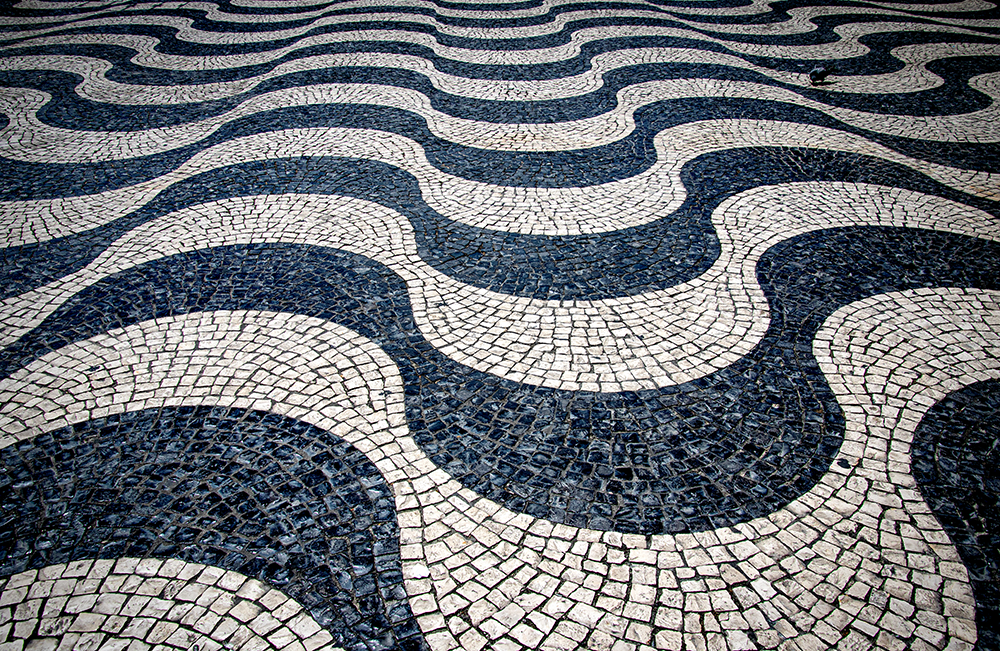
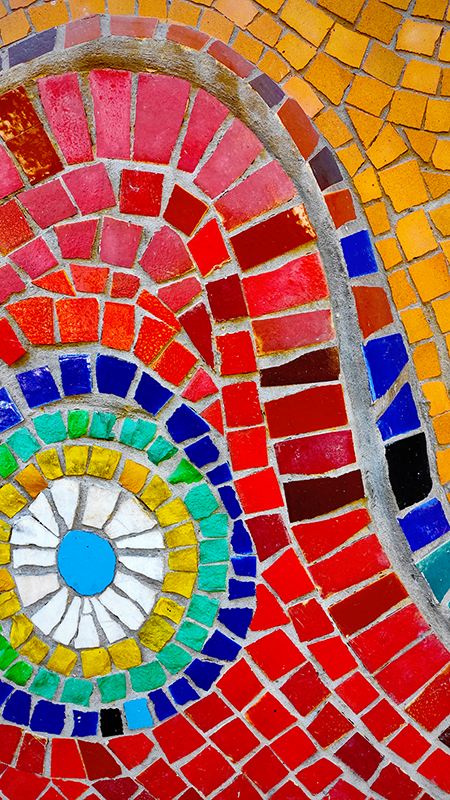

Defining Mosaic Art
Mosaic art is a technique that involves creating images or patterns by assembling small pieces of colored glass, stone, or other materials, known as tesserae.
Unlike painting, where artists apply pigments to a surface to create images, mosaic artists arrange tiny, often colored pieces to form a visual unity from a distance.
Historical Roots of Mosaic Art
The origins of mosaic art can be traced back to ancient Mesopotamia, but it was the Greeks who elevated the form, using finer pieces and more complex patterns to depict detailed scenes and human figures.
Roman mosaic art further refined the technique, making it a popular form of public and private decoration throughout the Roman Empire.
Byzantine Innovations
During the Byzantine era, mosaics became a primary medium for religious expression, particularly in decorating churches.
Byzantine mosaics are renowned for their spiritual imagery and extensive use of gold tesserae, which added a divine shimmer to the artwork, reflecting light and creating an ethereal presence.
Role of Mosaics in Islamic Art
In the Islamic world, mosaics took on a different flavor, adhering to religious prohibitions against depicting human figures.
Instead, intricate geometric patterns and calligraphy dominated the designs, which were often used to decorate walls, ceilings, and floors of mosques.
Renaissance Revival
The Renaissance period saw a renewed interest in all forms of classical art, including mosaics.
Artists like Raphael and Giotto dabbled in mosaic design, although the technique remained less common than fresco painting during this period.
Mosaic Materials: A Diverse Palette
Traditional mosaic materials include natural stone, ceramic tesserae, glass tesserae, and in some cases, gold tesserae.
Each material is chosen for its durability, color, and texture, contributing to the overall visual impact of the mosaic.
Mosaic Art in Ecclesiastical Architecture
Mosaic art has long been a staple in ecclesiastical settings, particularly within Christian mosaics that adorn the walls and floors of sacred buildings.
In the basilicas and cathedrals, from the early Christian period through the High Middle Ages, mosaic panels served not only as decoration but also as a form of storytelling and theological expression.
Iconic scenes from the Bible were intricately created using thousands of tiny mosaic pieces, each contributing to a larger, spiritually resonant image that speaks to the faithful.
The use of mosaics in places like St. Peter's Basilica exemplifies their importance in Christian worship spaces.
Here, the art form transcends simple wall decoration, becoming a medium through which divine narratives are communicated to a congregation.
The depiction of female saints and biblical events in these spaces often features a complex interplay of colored tiles and stones, arranged to produce a profound impact on worshippers and visitors alike.
This strategic use of mosaics underscores their role in enhancing the spiritual atmosphere of religious sites.

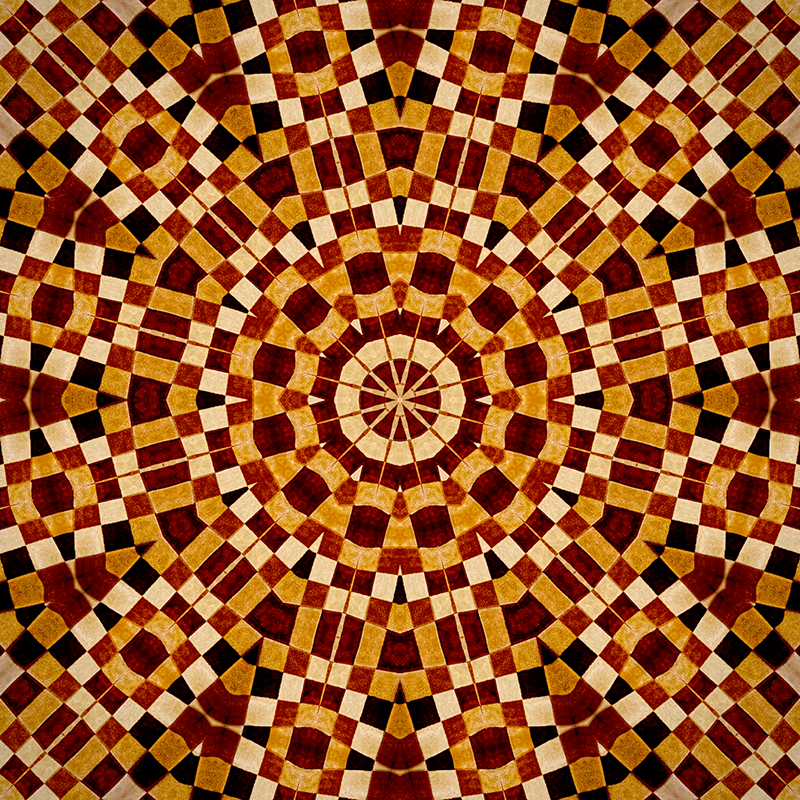

Mosaic Floors: Architectural Mastery
Mosaic floors have long been celebrated for their intricate designs and enduring beauty, particularly in historical contexts where they often depicted elaborate patterns and scenes.
In places like St. Peter's Basilica, these floors are not just surfaces to walk on but are profound expressions of art, capturing stories and traditions in each tile.
The careful arrangement of tiny, colored pieces forms a larger image that often has religious or cultural significance, showcasing the skill and vision of the artist behind it.
The allure of mosaic floors extends beyond their aesthetic appeal to their ability to convey historical and cultural narratives.
For instance, in the Middle East, floor mosaics often feature geometric patterns and water birds, symbols that are deeply rooted in the region's artistic heritage.
These elements are not randomly chosen but are imbued with meaning, reflecting the spiritual and social values of the time.
This stylistic choice bridges the gap between art and functionality, turning ordinary spaces into sanctuaries of history and imagination.
Evolution of Floor Mosaic Patterns
Floor mosaics, with their intricate designs and enduring appeal, have evolved significantly over centuries.
Initially, these artworks served as a testament to the opulence and spiritual depth of a space, particularly in historical landmarks like St. Peter's Basilica.
The so-called "cosmatesque" style, named after the Cosmati family who were renowned for their pattern work in the 12th century, is a prime example.
This style is characterized by geometric patterns interlaced with detailed motifs, showcasing a blend of classical Roman and medieval elements.
The evolution of floor mosaic patterns reflects broader cultural and artistic shifts.
In contemporary settings, these mosaics are not just about traditional beauty but also about making a modern statement.
Designers now experiment with a mix of materials and adapt ancient techniques to fit modern aesthetics.
This fusion approach has led to the creation of dynamic, eye-catching floors that bridge the gap between the past and the present, making each pattern a narrative of its own time.
Wall Art Mosaics Expressions
Wall art mosaics bring a dynamic texture and vibrancy to any space, transcending the traditional boundaries of paintings and sculptures.
Historically, these mosaics have been pivotal in depicting Christian scenes, especially in the early Christian East, where they adorned the interiors of sacred buildings.
The vivid imagery served not only as decoration but also as a narrative tool, teaching the faithful about biblical stories and saints through visually engaging scenes crafted from thousands of meticulously placed tiles.
In contemporary settings, wall art mosaics continue to evolve, embracing modern themes and techniques while still honoring their ancient roots.
Artists now experiment with a variety of materials and shapes, pushing the boundaries of traditional mosaic art to reflect current trends and thoughts.
This fusion of old and new styles makes mosaic wall art a versatile and captivating element in both public and private arenas, allowing it to communicate universal themes of beauty, tradition, and innovation.
Innovation and Techniques in Mosaic Art
The evolution of mosaic techniques has significantly influenced modern mosaic designs, particularly the direct method where tiles are directly placed onto the surface being decorated.
This technique allows for greater precision and detail in creating intricate patterns and images on both flat and curved surfaces.
It has opened up new possibilities for artists to explore complex and dynamic compositions, making it a preferred method for contemporary mosaicists aiming to push the boundaries of traditional forms.
Moreover, the introduction of unconventional materials like marble, glass, and so-called 'smalti' (colored glass tiles) has expanded the palette of mosaic artists, enabling them to achieve varying textures and effects within their artwork.
These materials not only enhance the visual depth of the mosaics but also contribute to their durability and vibrancy.
As a result, modern mosaics continue to adorn public and private spaces, maintaining their historical legacy while evolving to meet contemporary aesthetic and functional demands.


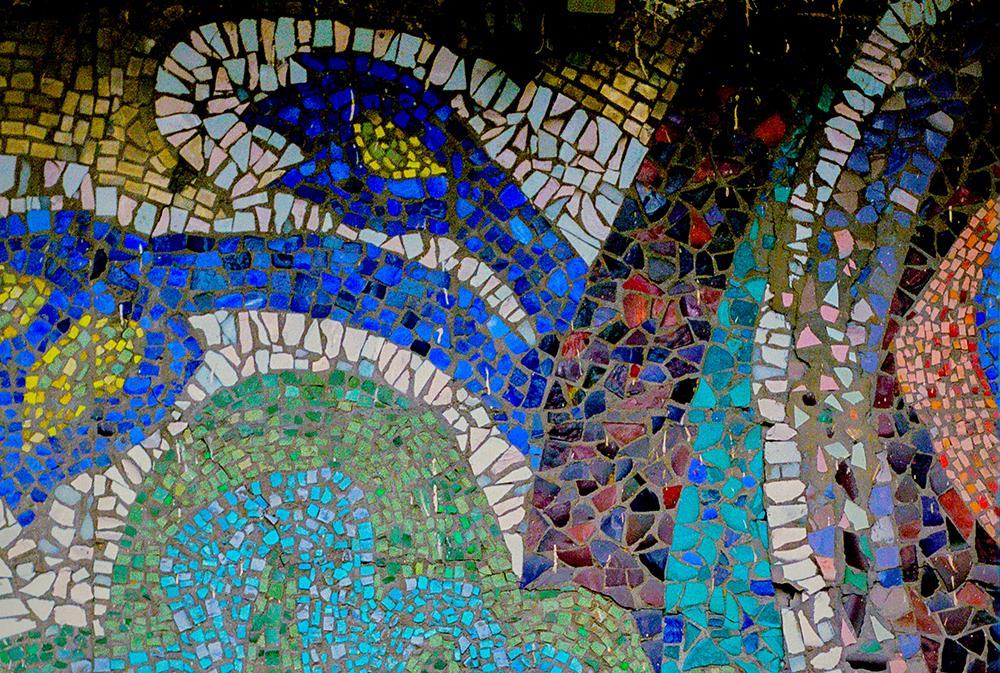
Modern Mosaics: A Blend of Old and New
In contemporary settings, modern mosaic art stretches beyond traditional boundaries, incorporating unconventional materials like photographs, mirrors, and found objects.
This evolution shows the adaptability of mosaics to modern artistic expressions and technologies.
Mosaic Technique: More Than Just Assembly
Creating mosaics is a labor-intensive process that requires precision and vision.
The indirect method, popular among modern artists, involves placing tesserae onto a backing paper before transferring the entire composition to its final destination, allowing for more intricate and detailed work.
Mosaics as Wall and Floor Art
Mosaics are particularly popular as wall and floor decorations due to their durability and ease of maintenance.
Historical examples include the lavish floors of Roman villas and the glittering wall mosaics of Byzantine churches.
Artistic Merit of Mosaics
While some may argue that mosaics are more craft than art, the creativity and skill involved in designing and executing a mosaic are on par with any other fine art form.
The ability to manipulate tiny pieces into a cohesive, expressive artwork requires both artistic vision and technical skill.
Mosaics in Public and Sacred Spaces
Mosaics have a storied history in both public and sacred spaces.
From the grand domes of Hagia Sophia in Istanbul to the intricate details of St. Peter's Basilica, mosaics convey religious narratives and historical events, bridging art with storytelling.
Preserving Mosaic Heritage
The preservation of mosaic art is crucial for cultural heritage.
Techniques involve meticulous restoration processes where conservators must address issues like tesserae loss, weathering, and previous restoration efforts that may have compromised the original integrity of the mosaics.
Significance of Mosaics in St. Peter's Basilica
Mosaics in St. Peter's Basilica are not just decorative elements; they are imbued with deep symbolic meanings that reflect the core of Christian theology.
Each piece, meticulously placed, tells a story from the Scriptures or portrays saints in scenes that speak volumes about faith and devotion.
The basilica's dome, adorned with mosaics, serves as a heavenly canopy over the pilgrims, creating an atmosphere of divine presence.
This artistic strategy helps transform the architectural space into a narrative medium, where art and faith intertwine seamlessly.
Furthermore, the mosaics inside St. Peter's Basilica function as a catechism in color and texture, educating the faithful and visitors alike about the rich history and beliefs of the Church.
The so-called "Navicella" mosaic, crafted by Giotto, originally positioned at the entrance, now serves as a beacon of the Church's journey through the tumultuous seas of history.
This mosaic, among others, not only enhances the aesthetic appeal of the basilica but also serves as a theological compass, guiding the viewer through the Church's teachings and the stories of its most significant figures.
Mosaics in St. Peter's Basilica have not only stood as a testament to religious devotion but have also significantly influenced contemporary art forms.
Artists around the globe draw inspiration from the intricate designs and spiritual narratives encapsulated in these mosaics.
The so-called "narrative mosaic" technique, seen in the basilica, uses tiny tesserae to create detailed, story-rich panels, encouraging modern artists to blend narrative and technique in their works.
This approach has led to a resurgence in mosaic art in public and private spaces, proving that ancient crafts can inspire new artistic revolutions.
Furthermore, the use of light and color in the mosaics at St. Peter's Basilica has taught contemporary artists about the power of illumination in art.
The way light plays off the glass and stone pieces in the basilica's mosaics creates a dynamic visual experience that changes throughout the day.
This understanding of light dynamics is now applied in modern installations and sculptures, pushing the boundaries of how art interacts with its environment and engages the viewer.
The basilica's influence extends beyond its walls, infusing modern art with both technique and a profound sense of spirituality.



Integration of Mosaics in Architectural Design
Mosaics in St. Peter's Basilica not only serve as decorative elements but are integral to the architectural narrative of the space.
The basilica's mosaics, with their intricate designs and vibrant colors, complement the grandiose architectural features, creating a visual symphony that enhances the spiritual and aesthetic experience.
These mosaics are strategically placed to guide the eye upward and outward, aligning with the basilica's architectural lines and vaults, thus reinforcing the structure's heavenly aspirations.
Furthermore, the use of mosaics in St. Peter's Basilica is a testament to the enduring appeal of this art form in significant architectural projects.
The basilica's dome, adorned with mosaics depicting biblical scenes, not only narrates sacred stories but also exemplifies how art and architecture can merge to create a transcendent space.
This seamless integration of mosaics elevates the structural elements, turning arches and domes into canvases that recount the rich history and spiritual significance of the basilica.
Mosaic art within St. Peter's Basilica stands as a testament to the enduring nature of this intricate art form.
Over centuries, these mosaics have withstood the ravages of time, preserving the sanctity and the stories they were crafted to tell.
The resilience of these artworks is not just a reflection of the materials used—often gold, glass, and stone—but also of the meticulous techniques passed down through generations.
Each piece, set with precision, contributes to the overarching narratives depicted in the vast expanses of this sacred space.
Furthermore, the so-called 'eternal' quality of these mosaics is emblematic of the spiritual messages they carry.
In St. Peter's Basilica, the mosaics are more than decorative elements; they are a profound dialogue between art and faith.
This dialogue is encapsulated in the scenes from the Gospels, the lives of saints, and the complex theological symbols that challenge both the faithful and art aficionados to delve deeper into their meanings.
This enduring nature speaks volumes about the role of mosaics as both protectors of heritage and as perpetual storytellers within the walls of one of Christianity's most revered landmarks.
Artistic Synergy in St. Peter's Basilica Mosaics
The mosaics of St. Peter's Basilica are not standalone artworks but are part of a larger symphony of artistic expressions that include architecture, sculpture, and painting.
This synergy is particularly evident in the way mosaics interact with the architectural elements of the basilica—vaults, domes, and arches are all enhanced by the detailed mosaic works that highlight their features.
The play of light on the glass tesserae brings these architectural features to life, creating a dynamic interaction between form and color that enhances the spiritual and aesthetic experience for visitors.
Moreover, the integration of mosaics in St. Peter's Basilica's design goes beyond mere embellishment.
Each mosaic scene is strategically placed to guide the viewer's eye and spirit through the sacred narrative, creating a visual pilgrimage that mirrors the physical journey through the basilica.
This thoughtful placement transforms the interior into a cohesive narrative space, where art and architecture converge to tell the timeless stories of faith that are central to the basilica’s spiritual mission.
This artistic synergy not only beautifies the space but also deepens the visitor's engagement with the basilica's sacred purpose.
The mosaics of St. Peter's Basilica are often referred to as 'living' artworks due to their dynamic interaction with the natural light that filters through the basilica's windows.
This interplay of light and mosaic art transforms the interior atmosphere throughout the day, reflecting the changing moods and times of religious ceremonies.
The reflective properties of the glass tesserae used in the mosaics capture and manipulate light, giving these artworks a lifelike quality that enhances their narrative and spiritual impact.
Moreover, this dynamic aspect of the mosaics in St. Peter's Basilica serves as a metaphor for the ever-adapting nature of the Church itself, responding to and reflecting the needs and values of its congregation.
As the daylight shifts and alters the appearance of the mosaics, so too does the basilica continue to evolve as a living entity, enriched by centuries of faith and artistry.
This concept of 'living' mosaics underscores the deep connection between the art, its architectural context, and the spiritual life it encapsulates and inspires.
Influence of Mosaics in St. Peter's Basilica
Mosaics in St. Peter's Basilica serve as more than just decorative art; they are pivotal in narrating the rich history and the theological significance of the site.
Each mosaic piece is a fragment of the story of early Christianity and the church's evolving role through centuries.
The so-called "Gospel in Glass" technique used in these mosaics encapsulates biblical tales and papal histories, making the basilica not only a place of worship but also a vibrant historical archive.
Visitors are often captivated by how these images chronicle events and figures pivotal to Christian lore.
Moreover, the strategic placement of mosaics within St. Peter's Basilica also highlights significant architectural and historical epochs in the church's development.
For instance, the mosaics located in the grottoes tell stories of martyrs and saints, linking the physical burial sites with their spiritual significances.
This method of storytelling through art ensures that the history of the basilica is preserved and passed on, not through written documents alone but through a living, visual medium that communicates with every observer, bridging past with present.
St. Peter's Basilica stands as a monumental example of how mosaic art can elevate a sacred space to unparalleled artistic heights.
The basilica's mosaics, with their divine imagery and intricate details, play a crucial role in storytelling and spiritual representation.
The so-called "Navicella" mosaic, originally designed by Giotto, is a striking feature that depicts a biblical scene in a style that combines both Byzantine and Renaissance elements, reflecting the transitional period of art.
Moreover, the mosaics inside St. Peter's Basilica are not only masterpieces of religious art but also serve as a historical archive that offers insights into the artistic and theological inclinations of the time.
Each mosaic, with its unique style and pattern, contributes to a larger narrative that speaks to the viewer on both an aesthetic and a spiritual level.
This dual function of mosaics as both art and narrative is what makes them an integral part of the basilica's cultural and religious identity.


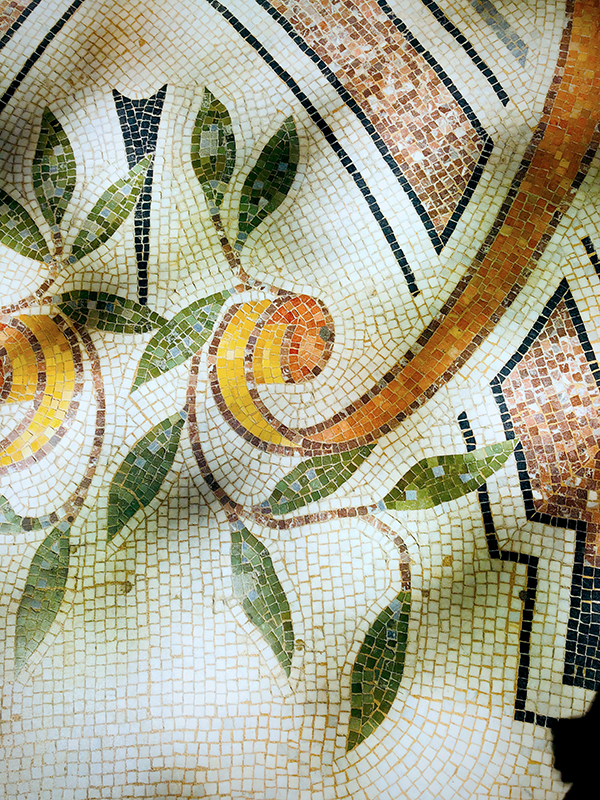
Embracing the Mosaic Magic: Timeless Journey
Mosaics, with their rich history and complex techniques, stand out as a unique and powerful art form.
They are not just an alternative to painting but a vibrant and standalone art form that has captivated human imagination across millennia.
Their ability to weave intricate stories through tesserae showcases their unique power and the deep emotional resonance they can evoke.
While fundamentally different from painting, mosaics offer a similarly profound medium for artistic expression and narrative storytelling.
The evolution from ancient adornments to contemporary art pieces underscores the adaptability and enduring appeal of mosaics.
From ancient walls to modern installations, mosaics continue to adapt, inspire, and testify to the enduring human spirit to create beauty and meaning.
As we appreciate their historical significance and contemporary relevance, we truly embrace the magic of mosaics, celebrating their place in the vast tapestry of art.
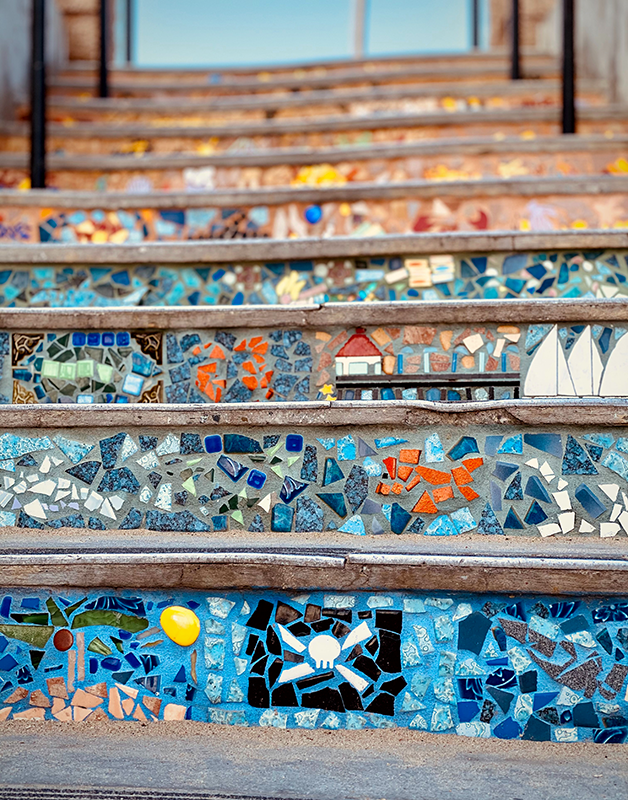

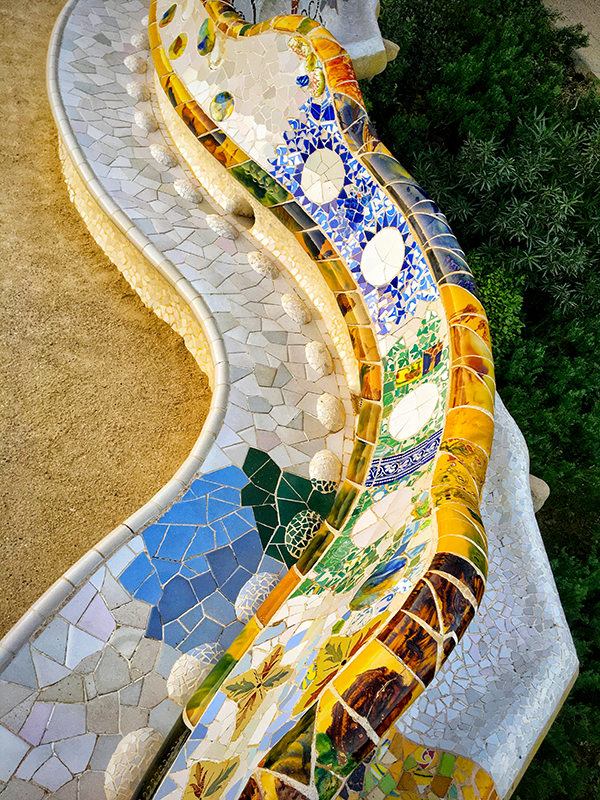
Mosaic FAQs
Welcome to the colorful and intricate world of mosaic art!
Whether you're a seasoned artist or a curious newcomer, these FAQs are designed to shed light on some of the most common inquiries about this unique art form.
From understanding the basic differences between mosaic art and painting to exploring its status as fine art and the variety of themes it encompasses, we've got you covered.
Dive into these frequently asked questions to deepen your appreciation and knowledge of mosaic artistry.
What distinguishes mosaic art from painting?
Mosaic art involves assembling small pieces of materials to create images, unlike painting, which involves applying wet media to surfaces.
Can mosaic art be considered fine art?
Absolutely, mosaic art is recognized for its high artistic quality and complexity, requiring significant creativity, skill, and technique, akin to other forms of fine art.
Are mosaics only used for religious and historical imagery?
No, while mosaics have strong historical ties to religious and cultural imagery, modern mosaics explore a wide range of themes and subjects, including abstract and decorative designs.
What materials are commonly used in creating mosaic art?
Mosaic art can be made from a variety of materials, including glass, ceramic tiles, stones, pebbles, and even shells. Each material brings a unique texture and color to the artwork, allowing for diverse and vibrant creations.
How long does it take to complete a mosaic piece?
The time it takes to complete a mosaic depends on the complexity and size of the design. Smaller projects might take a few hours, while larger, more intricate pieces can require weeks or even months of dedicated work.
Is mosaic art suitable for outdoor spaces?
Yes, mosaic art is an excellent choice for outdoor spaces due to its durability and resistance to weather conditions. Materials like ceramic and glass are often used for outdoor mosaics to ensure they withstand the elements over time.
Can beginners create mosaic art?
Absolutely! Mosaic art is accessible to artists of all skill levels. Beginners can start with simple designs and smaller projects to gain confidence and experience before moving on to more complex compositions.
What is the historical significance of mosaic art?
Mosaic art has a rich history dating back to ancient times, used in various civilizations including the Romans and Byzantines. Historically, mosaics were used to decorate floors, walls, and ceilings, often depicting mythological scenes, everyday life, and portraits, serving both decorative and functional purposes.
How do I maintain and preserve mosaic art?
Maintaining mosaic art involves regular cleaning to remove dust and debris, using gentle, non-abrasive materials to avoid scratching the surface. For outdoor mosaics, it may be necessary to apply sealants periodically to protect against moisture and fading from sunlight.
What are some popular techniques in mosaic art?
There are several techniques used in mosaic art, including the direct method where pieces are directly placed onto the mounting surface, and the indirect method where pieces are temporarily set on a backing paper before being transferred to the mounting surface. Each technique offers different advantages and is chosen based on the specifics of the project.
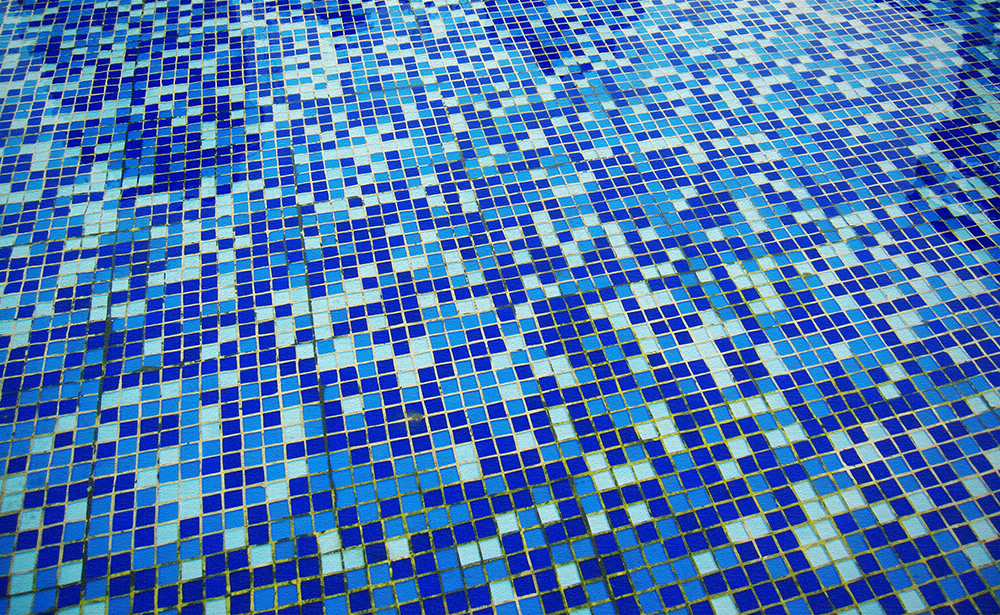
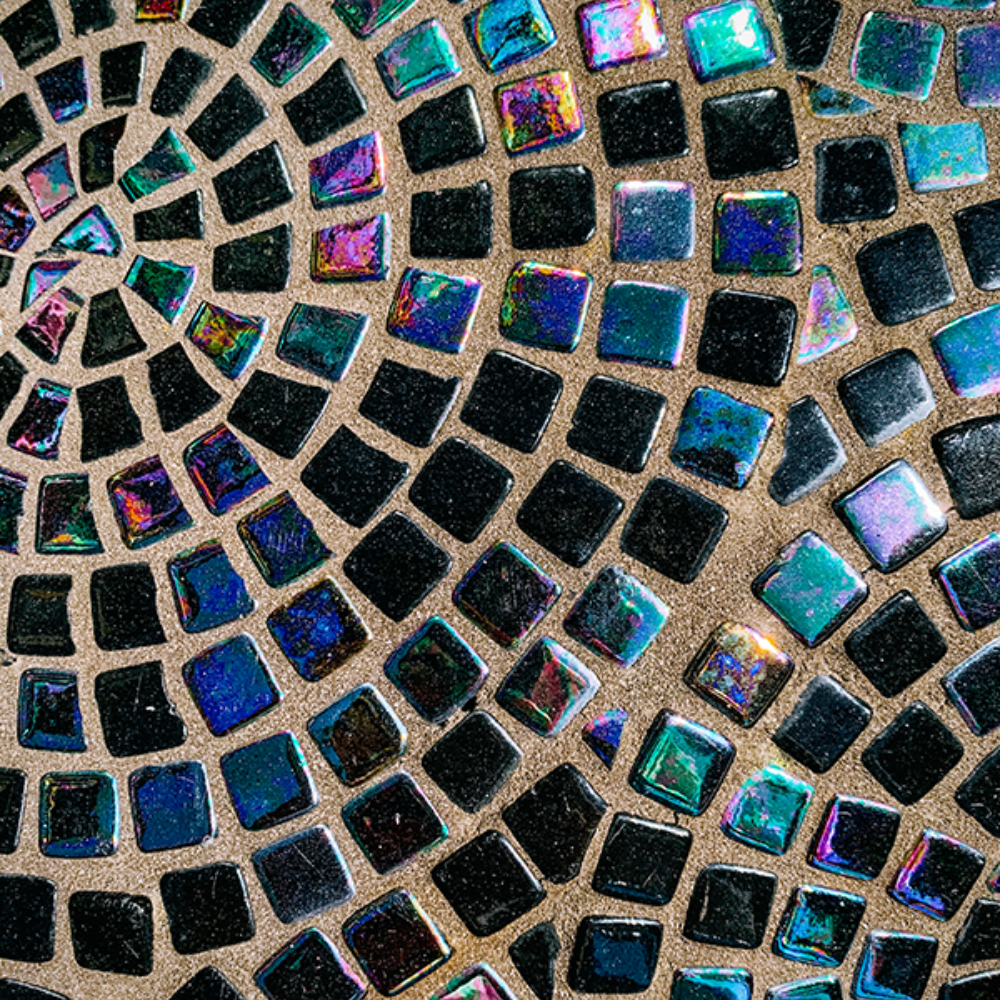
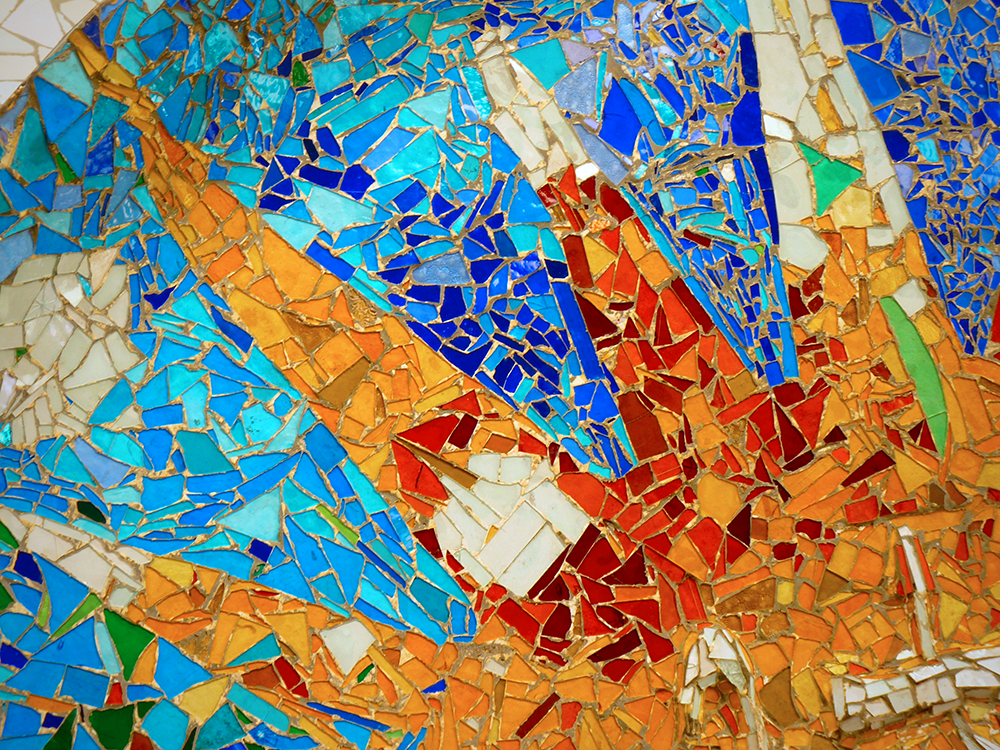
Eager to dive into the world of mosaics? Check out Julie Weilbacher's video!
Want even more content about creativity and art?
Be sure to check out all of our creative chronicles!
Interested in exploring the world of mosaics?
Check out some of our other articles:
-What makes a mosaic a mosaic?
-What are the 3 main types of mosaics?
-What are the elements of mosaic art?
-What is another word for mosaic?










